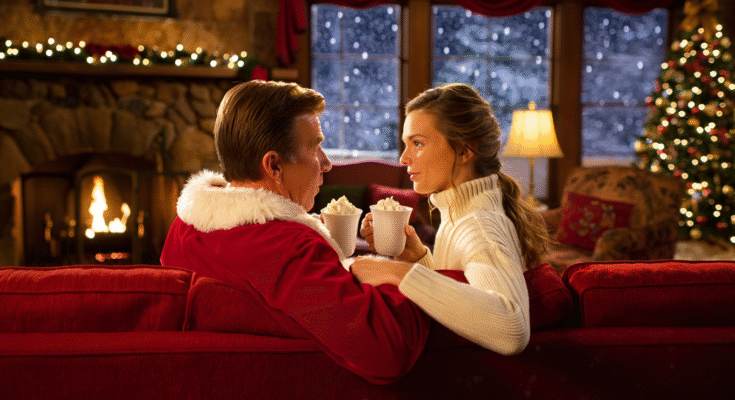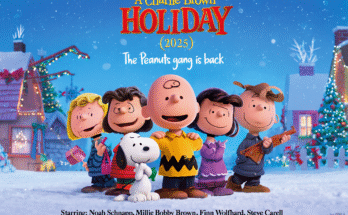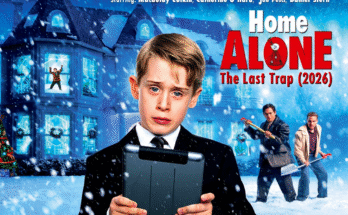Tim Allen once again dons the red suit and snowy beard in The Santa Clause (2025), reigniting a holiday franchise that has charmed audiences for decades. This new installment embraces the nostalgia of its roots while gently reshaping the mythos for modern audiences, proving that Scott Calvin’s journey as Santa is far from over.
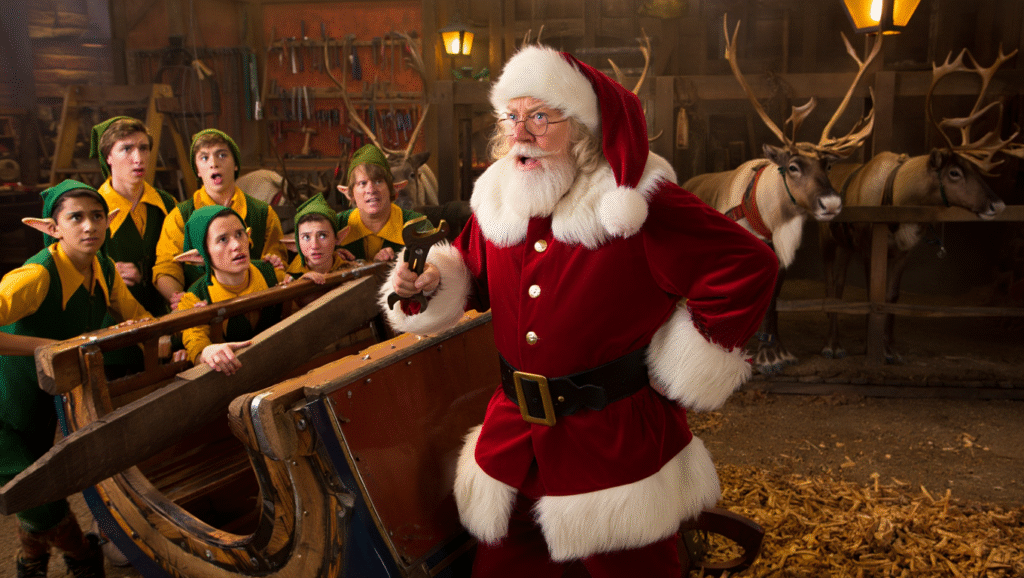
The film finds Scott Calvin at a crossroads. Having spent years perfecting sleigh rides, toy production, and the delicate logistics of Christmas night, Scott has become a seasoned Santa—but one still prone to doubt. This entry smartly leans into the idea that being Santa isn’t a static role; it’s an evolving challenge that tests both the man and the myth.
Elizabeth Mitchell returns as Carol, bringing warmth and stability to Scott’s chaotic world. Their relationship remains the beating heart of the story, grounding the larger-than-life North Pole antics in the universal struggles of family, love, and compromise. Together, they face new hurdles that threaten not just Christmas, but the very balance of their lives.
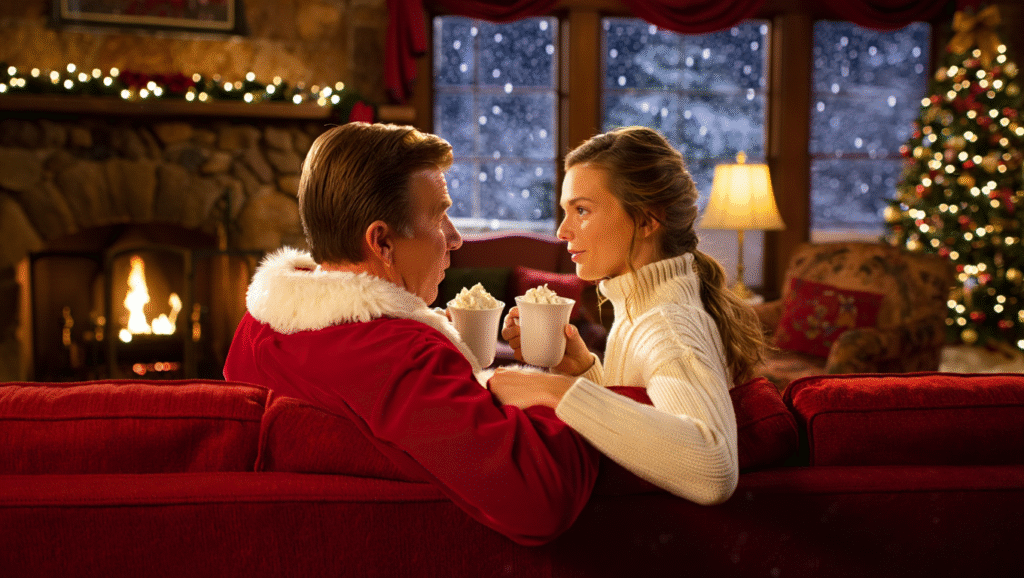
The magic of the North Pole continues to be a highlight, blending practical whimsy with polished modern effects. Elves buzz with mischievous energy, reindeer deliver both comic beats and majestic flight, and the workshop hums with new inventions that showcase the film’s blend of tradition and fresh imagination. The visual world feels both familiar and refreshed, like unwrapping a classic toy that’s been given a modern upgrade.
Comedy remains central, with Tim Allen leaning into his trademark physical humor and sarcastic delivery. From sleigh malfunctions to misunderstandings with elves, the slapstick sequences land with family-friendly energy. Yet beneath the laughs lies a sense of vulnerability, as Scott wrestles with doubts about legacy, responsibility, and the weight of carrying Christmas on his shoulders.
Thematically, the film pushes beyond presents and punchlines. It explores how traditions evolve, how families grow, and how faith—whether in magic, love, or one another—sustains us through life’s changing seasons. The idea that being Santa is about more than gifts—that it’s about embodying hope and belief—resonates in a world where cynicism often overshadows wonder.
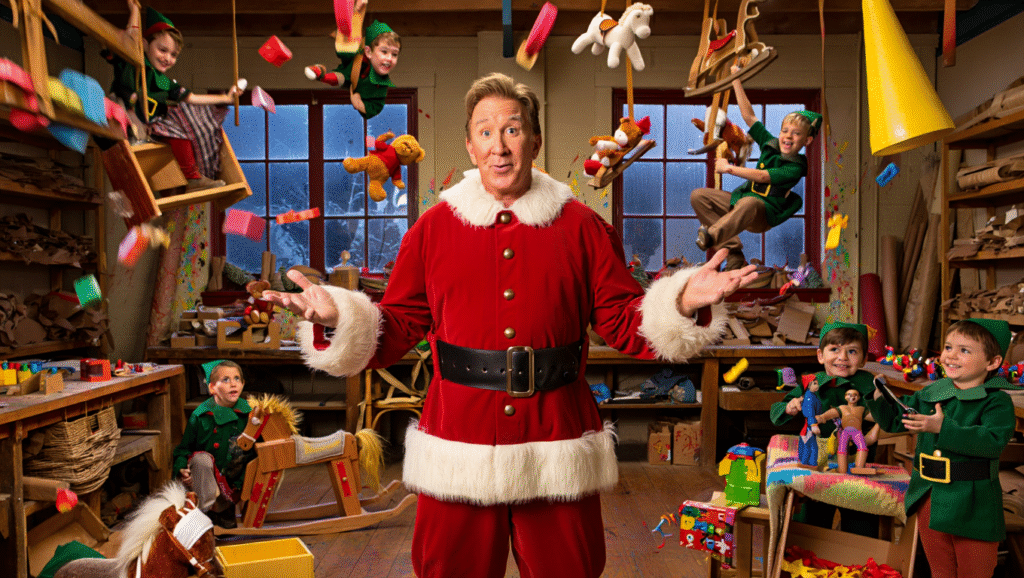
What keeps the film from feeling like just another holiday retread is its emotional sincerity. The screenplay doesn’t shy away from showing Scott’s flaws, nor does it let the story rest on nostalgia alone. Instead, it leans into generational storytelling, suggesting that the magic of Santa is not just something to preserve but something to pass down.
The supporting cast shines in their comedic and heartfelt beats. From bumbling elves who turn mishaps into miracles to family members struggling to adjust to Scott’s larger-than-life role, each subplot ties neatly back into the central theme: Christmas is not just about one man—it’s about the collective spirit of giving and believing.
Musically, the score weaves classic Christmas melodies with a contemporary flair, layering in both cheer and gravitas. Familiar jingles return, reminding audiences of the franchise’s origins, but the fresh compositions elevate the emotional crescendos. It’s the kind of soundtrack that lingers in your ears long after the credits roll.
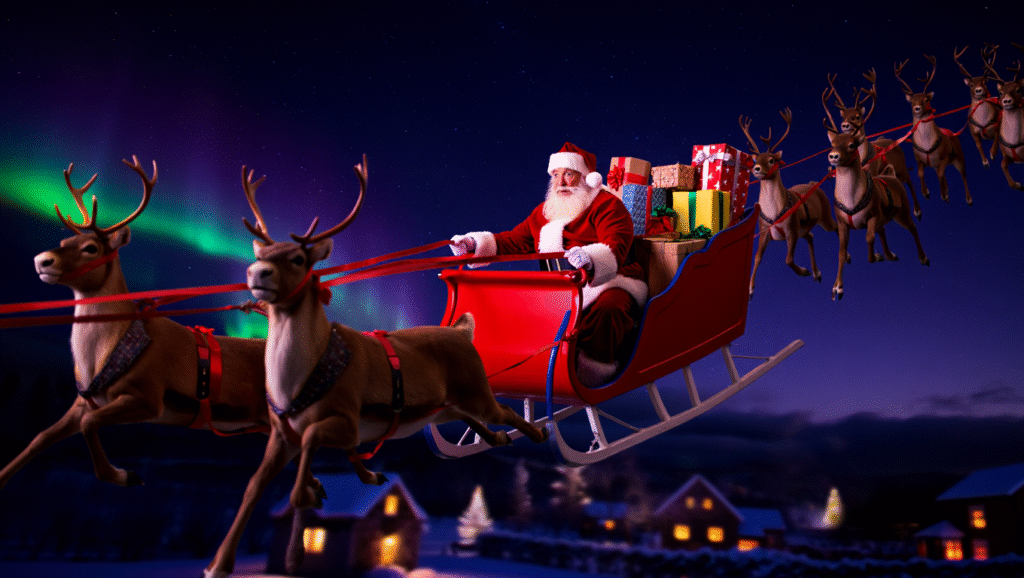
For longtime fans, The Santa Clause (2025) is a heartfelt continuation—a film that honors the original while giving Scott Calvin new depths to explore. For newcomers, it’s a welcoming holiday adventure, filled with laughter, heart, and magic that transcends generations.
By its close, the movie delivers exactly what you’d hope for: warmth, wonder, and a gentle reminder that even as the world changes, the spirit of Christmas remains evergreen. Like a stocking hung by the fire, The Santa Clause (2025) is filled with surprises, comfort, and a touch of timeless magic.
